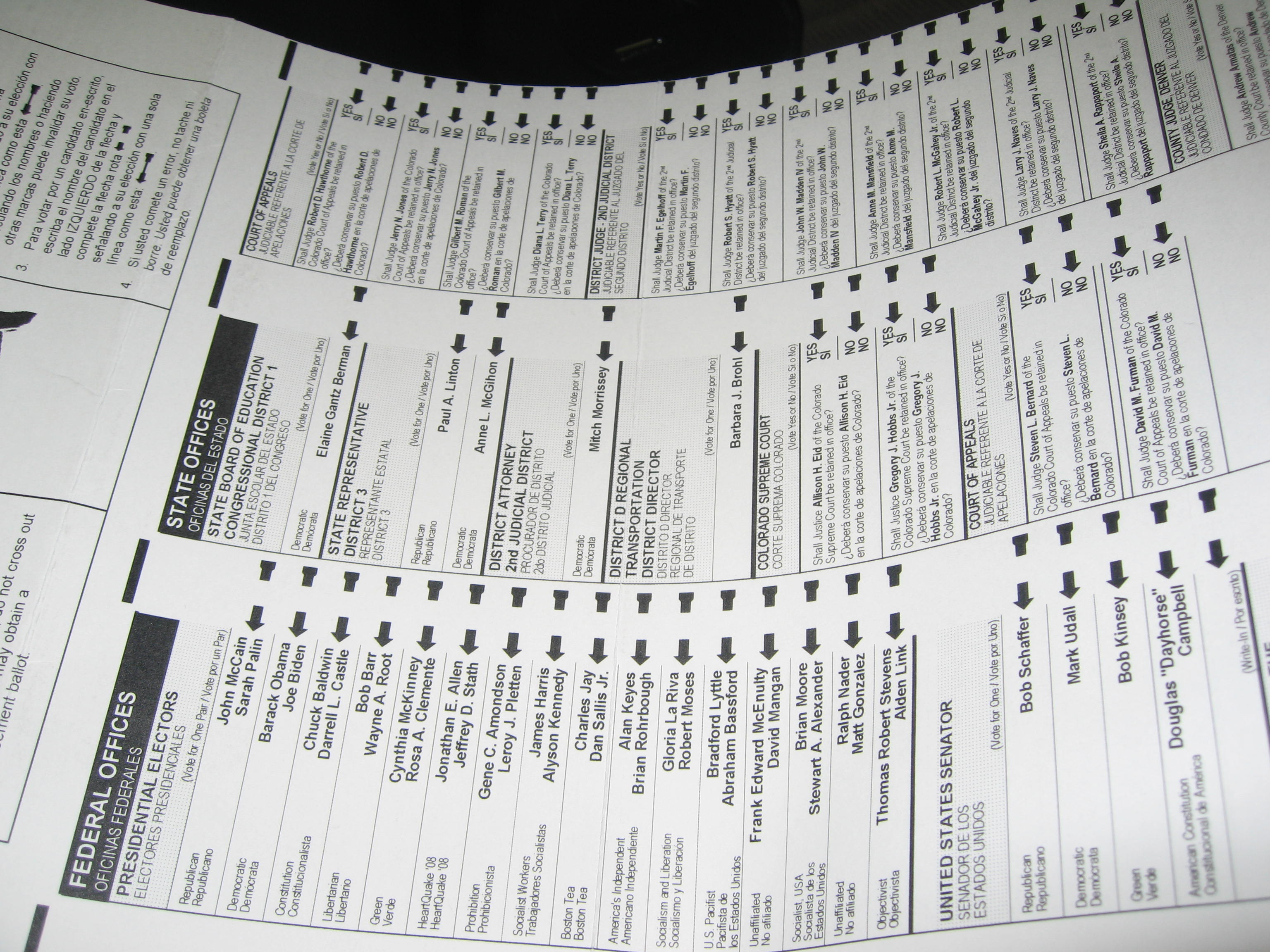US Election Ballots: Confusing!

Ballots all over the US are different, because State laws have different laws. In fact, in the state of Colorado itself there are about 9 different kinds of voting. The one displayed above, for example, is one where you need to connect the arrows together for the candidate of your choice.
We were astonished at how complicated a ballot actually is. This one is two pages long, because not only are they voting for President, they are voting for the State Senator (this elections, one third of the Senate is up for election), State Congressman, plus their State Legislature (the equivalent of the Congress but at State level). Aside from candidates, they also vote on initiatives – this year there are 10 on the ballot. This includes voting on amendments to the State constitution (on abolishing affirmative action policy on the basis of race, gender etc, amongst others).
The way you get to select what goes into the ballot to be voted on, is this: There must be sufficient signatories to a particular cause, which goes up then to the Secretary of State. If there are enough signatures, the initiative gets to be on the ballot. This is a perfect example of bottoms up participatory democracy, in which citizens themselves truly decide on what they desire. Some argue though, that it is a complete waste of time because this is why they elect their representatives (they also elect their School Board members here, who determine education policy).
To make matters worse, this ballot was two pages long and involves legal jargon that is completely difficult to understand, unless you have a “voter’s guide” (which the League of Women Voters thankfully prepares for people all across the States). This guide tells you the history and background of each initiative voters have the power to change.

There is also the issue of who chooses which name comes first on the ballot. If you see this one, John McCain and Palin’s names are first, followed by Obama and Biden. Again, this varies from state to state but in this particular case the Commission would decide – then bringing into question whether there should be actually equal numbers of ballots with either name preceding the other, or not. A former State election commissioner spoke to us about the concept of neutrality when in office.
